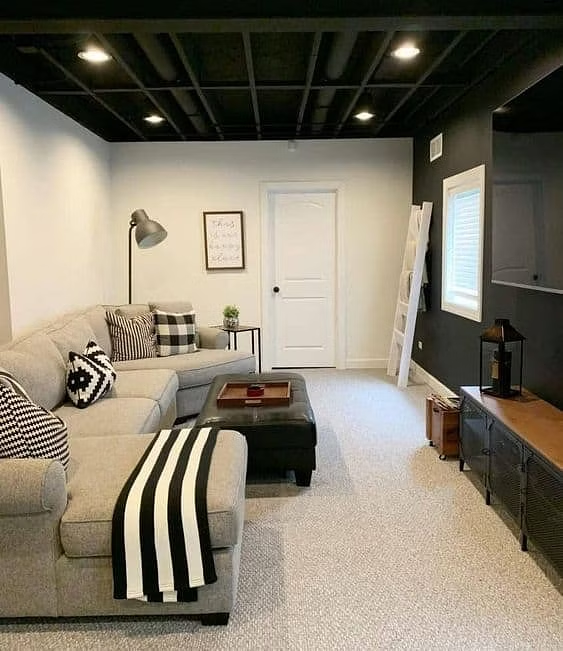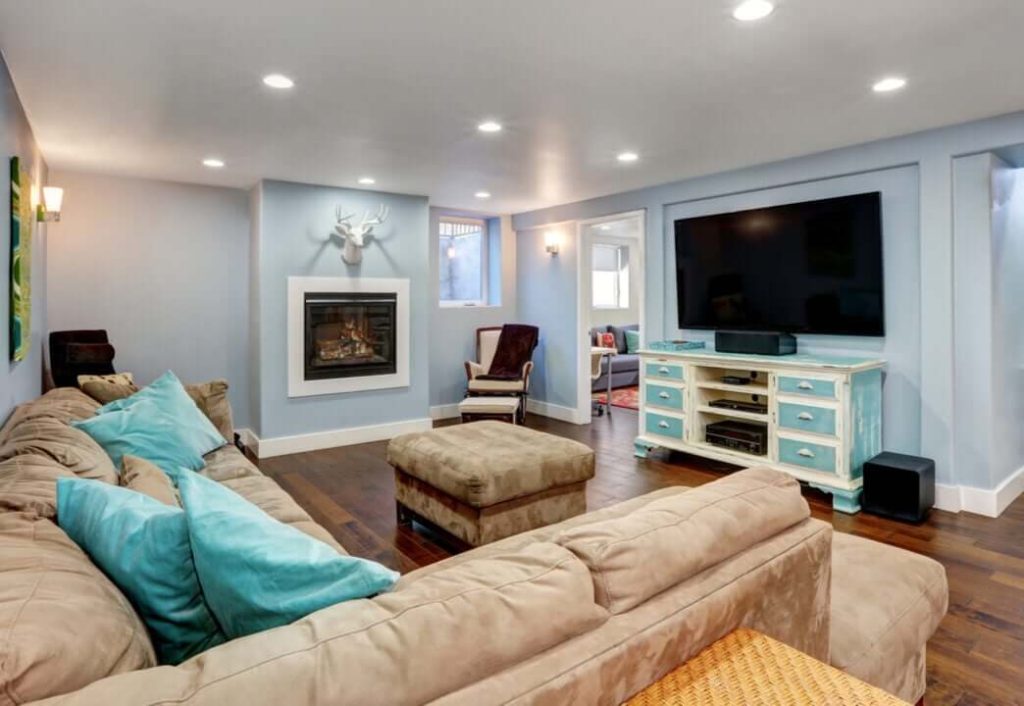A finished basement can add significant living space and value to your home, but dealing with a low ceiling height presents unique challenges. Whether you’re looking to convert your basement into a cozy living area, a home office, or a recreational space, addressing the constraints of a low ceiling requires careful planning and creative solutions.

Understanding the Challenges of a Finished Basement Low Ceiling
A finished basement with a low ceiling often feels cramped and may lack the openness and airiness of rooms with standard ceiling heights. Typical ceiling heights in basements can range from 7 to 8 feet, but older homes or basements with HVAC ducts, plumbing, or other structural elements may have even lower ceilings, sometimes as low as 6 feet or less.
Design Considerations for a Finished Basement Low Ceiling
When planning your basement renovation, consider the following design tips to make the most of your space:
- Opt for Light Colors: Light-colored walls and ceilings can visually expand the space and make it feel brighter. Avoid dark colors, as they can make the room feel smaller and more closed-in.
- Use Recessed Lighting: Recessed or flush-mount lighting fixtures take up less overhead space compared to hanging or pendant lights. They can provide adequate lighting without reducing ceiling height.
- Choose Low-profile Furniture: Select furniture pieces that are lower to the ground, such as sofas and chairs with lower backs. This helps create an illusion of higher ceilings and prevents the space from feeling overcrowded.
- Install Vertical Storage: Utilize wall-mounted shelves, cabinets, and built-in storage to maximize floor space and keep the room organized without sacrificing headroom.
- Mirrors and Glass: Strategically placing mirrors and incorporating glass elements can reflect light and create an illusion of more space.
Benefits of Finishing a Basement with a Low Ceiling
Even with its challenges, a finished basement with a low ceiling offers several advantages:
- Increased Home Value: A well-designed finished basement adds usable square footage to your home, increasing its overall market value.
- Functional Space: It provides extra living space for various purposes, such as a guest bedroom, home gym, entertainment room, or children’s play area.
- Cost-effectiveness: Renovating an existing basement is generally more cost-effective than building an addition to your home.
- Customization: You have the freedom to customize the space according to your needs and preferences, from the layout and flooring to the choice of furnishings and decor.
Planning Your Finished Basement Project
Before starting your renovation project, consider these practical steps:
- Assess Structural Issues: Ensure the basement is waterproofed and free from moisture issues. Address any structural concerns, such as cracks in the foundation or uneven floors, before proceeding with interior renovations.
- Consult with a Professional: Hiring a qualified contractor or designer who specializes in basement renovations can help you navigate the challenges of a low ceiling height and ensure the project meets building codes and safety standards.
- Permit Requirements: Check with your local building authority to determine if permits are required for your renovation project, especially if you plan to make structural changes or install new electrical or plumbing fixtures.
Maintaining a Finished Basement with a Low Ceiling
Once your basement renovation is complete, regular maintenance is essential to preserve its functionality and aesthetics:
- Monitor Moisture Levels: Keep an eye on humidity levels and address any signs of moisture or water intrusion promptly to prevent mold and mildew growth.
- Ventilation: Ensure adequate ventilation to improve air circulation and prevent musty odors. Consider installing a dehumidifier if needed.
- Inspect Lighting and Fixtures: Periodically check and clean light fixtures and replace bulbs as necessary to maintain optimal lighting throughout the space.
- Update and Refresh: Over time, update furnishings and decor to keep the space looking fresh and inviting. Consider periodic deep cleaning of carpets or upholstery.
Read too: Kitchen Lighting For A Vaulted Ceiling: Illuminating Your Space with Style and Functionality
Conclusion
Creating a finished basement with a low ceiling requires thoughtful planning and design strategies to optimize the space while overcoming height limitations. By carefully choosing materials, furnishings, and lighting, you can transform your basement into a functional and inviting area that adds value and versatility to your home.

